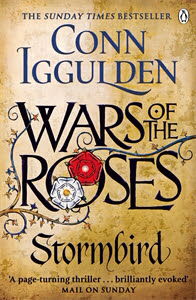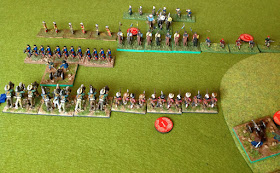Pages
Saturday, 24 October 2015
Shattering Empires - Russia and Turkey 1908-18
Tuesday, 13 October 2015
The Last Ironsides
My half term holiday reading has been Jonathon Riley's 'The Last Ironsides'. I am often attracted to obscure campaigns and I picked up this book in a London bookshop a while ago. It is a history of the English expedition to Portugal 1662-1668.
Portugal had been fighting for its independence from Spain for many years when Charles II was restored to the British throne. He agreed to marry the Infanta, Cathrine of Braganza, in return for a much needed cash dowry, trade concessions, and possession of Bombay and Tangier.
Part of the deal was that he would send two regiments of foot and a regiment of horse to support the Portuguese army. This was an opportunity to ship out of the country the remnants of Cromwell's New Model Army. A win-win deal by any standard.
The author covers the diplomatic background and then the campaigns the English regiments fought in. They became, with French regiments, the cutting edge of the Portugese army and distinguished themselves in several battles and sieges. Only a thousand were left standing when the war was won and 400 of these were sent to Tangier, a virtual death sentence in itself.
The English regiments mostly fought in Southern Portugal and Spain. Many of the place names are familiar to the later Peninsular War campaigns in the early 18th and 19th centuries. Badajoz, Merida and Albuquerque, amongst others.
The book is well illustrated with period drawings and modern maps. The English regiments even kept their New Model Army redcoats, so this provides another campaign for wargamers with later civil war armies.
Monday, 12 October 2015
Stormbird
The Wars of the Roses has never been a period of great interest to me. Perhaps being born in Lancashire, but married to a Yorkshire woman, has meant that this is a subject best avoided! In wargaming terms the serried ranks of archers and plate armed foot lumbering towards each other for a slog fest, has also never appealed.
However, it is certainly in fashion at present. Dan Jones's book looks interesting, but I was drawn in by Conn Iggulden's series of historical novels, staring with Stormbird.
He starts in 1437, when Henry VI, the Lamb, accedes to the English throne after years of regency. As the name suggests, he was not a chip of the old block of his father Henry V, hero of Agincourt. His poor health and frailty of mind render him a weakling king, relying on his closest men, Spymaster Derry Brewer and William de la Pole, Duke of Suffolk. Others, such as the Plantagenet Richard, Duke of York, believe England must be led by a strong king if she is to survive.
This book focuses on a secret deal struck for Henry to marry a young French noblewoman, Margaret of Anjou, in return for territories in France. However, one of the book's heroes, Thomas Woodchurch, an archer living in these territories, resists the French occupation. This allows the French King to capture most of the English territories in France. Woodchurch then returns to Kent and takes part in Cade's rebellion.
Iggulden is of course a first rate writer and this is classic historical fiction. Well researched, plenty of action, and numerous sub plots. I doubt if it will make the period any more attractive to me in wargaming terms, but it's a great read.
Sunday, 4 October 2015
Battle of Leva 1664 - the game
There is a very good article by Iain Stanford in the latest edition of The Arquebusier on the 4th Austro-Turkish War 1663/4 and the battles of Leva (Levice) and St Gotthard.
Leva was the smaller warm up to the more decisive clash at St Gotthard, but it is a very manageable game for the tabletop. I used 15mm figures and Pike and Shotte rules.
The Imperial forces in Northern Hungary were commanded by Souches and he was opposed by Ottoman forces, including Wallachian and Moldavian vassals, commanded by Ali Pasha of Buda. Souches was besieging Leva when he heard Ali Pasha had moved to cut off his lines of communication. So he abandoned the siege to meet the Ottoman army.
The Ottoman forces crossed the river towards the visible Left and Right wings of the Imperial army. The centre was held back behind some woods. Ottomans on the right of this photo.
The Imperial left commanded by Knigge advances against the Wallachians with Tartar horse.
While the Moldavians advance boldly against the Imperial right commanded by Heister.
The Wallachians get the upper hand.
But it's harder going for the Moldavians. Those curaissiers aren't much bothered by Tartar arrows and the best Moldavian cavalry is slow to advance because of shooting disorganisation.
Then the Imperial centre advances against the best Ottoman troops, the Janissaries.
However, they are split because the Wallachians rout the Imperial left wing.
Game over when the Moldavians do the same on the Imperial right.
A reversal of history as in the historical battle the centre crushed the Janissaries and then rolled up the Moldavians.
An enjoyable game, that the rules played well. My only reservation is how they treat pike and shot regiments, it doesn't feel quite right. FoGr does this better, but the command mechanisms in Pike and Shotte work better for this period. Ah, the search for the perfect rule set goes on!










